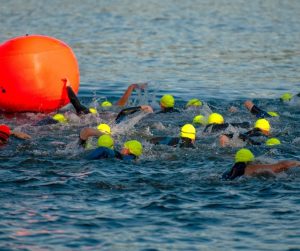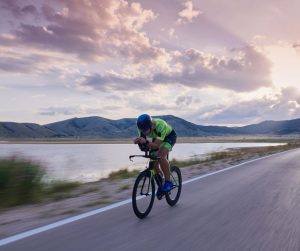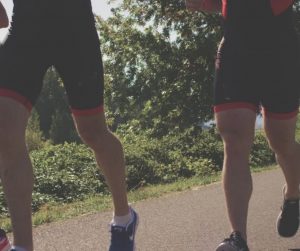Triathlon:
In recent years Triathlons have seen an explosion in popularity. If you are one of the converts, then chances are you’re in peak season trying to juggle training in all three disciplines, getting race ready and managing your recovery effectively. The variety of training involved certainly goes some way to alleviate aches and pains and to prevent over-use of particular muscle groups, but like every sport, there are always risks.
SWIM:
This is generally the weakest discipline in terms of both ability and knowledge. The same bad habits appear over and over contributing as much to slower times and boredom as they do injury
Rule one:
Put away the pull buoy. Unless you have a background in serious competitive swimming, you are probably not good enough technically (sorry!) to justify using one. It is putting unnecessary strain on the shoulders, it is not enhancing your technique and is actually contributing to most people’s greatest technical weakness; the kick. Make the kick-board your aid of choice from now on, no matter how difficult it seems.
Rule two:
Intervals. If your distance per session is 1000m, make it 10×100, 5×200 or any combination of your choice. The rest intervals allow for recovery, letting you swim more effectively, improving your times and decreasing the risk of repetitive strain injuries on the shoulders.


CYCLE:
Make sure your bike fits! Cycling has a deservedly good reputation in terms of being relatively low risk for repetitive strain injuries, but it is not immune. Saddle height is a big contributor with the knees coming under pressure if the saddle is either too low or too high. This becomes particularly pertinent if you are increasing your hill work. Length of saddle to handlebar is essential to ensure minimal strain on the lumbar spine.
RUN:
The most high impact discipline of the three and often the most over-trained. Every athletes running routine should include a dynamic warm up before each run ,a core strengthening programme done consistently and correct footwear replaced regularly according to manufacturers guidelines. Avoid excessive downhill running and where possible find a track or a trail to minimise running on concrete.

The most important point of all is to listen to your body. If you have an ache or a pain there has to be a reason. Injuries rarely happen overnight, there has usually been a gradual build up of signs and symptoms that have been ignored. Triathletes tend to be gluttons for punishment but recovery is essential, in the long run, less is sometimes more!
Remember…
If you are interested in booking an appointment with one of our Chartered Physiotherapists that specialise in sports injuries or simply need some guidance, then please give us a call on 021 4633455 or book online below.
We hope you enjoyed this blog by Mark Canning, Chartered Physiotherapist
This blog is provided for information purposes only. The content is not intended to be a substitute for professional medical advice, diagnosis or treatment. Seek the advice of your doctor with any queries regarding a medical condition.
